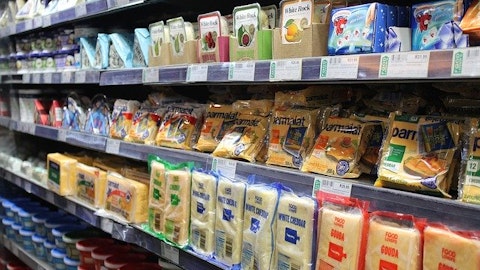The news was well-received by hundreds of chefs in attendance who like the other players in the food business are paying a lot of attention to sustainability in response to broad interest by food consumers at both the restaurant and retail levels. One thing we heard over and over in our discussions with chefs and other culinary influencers was the concept of evolving from consumers to contributors. In other words, there is a growing desire in the chef community to move beyond simply consuming food to actively participating in practices that contribute to higher levels of sustainability. We see Smart Catch as being an important part of that process. It reinforces our mission of advocating for high food standards and facilitating the accessibility of responsible seafood choices for chefs and diners alike.
We also see tremendous potential for expansion into other areas of the seafood supply chain including food service institutions, retailers, seafood distributors, suppliers, and producers around the world. Although the current focus is on seafood, we as well as other chef community are interested in expanding the program to other products. So, overall, the LA Chef Conference was a great kickoff for us in our new role and with dozens of similar conferences around the world every year we see these types of events as excellent opportunities to market the program and grow our customer base. So, with that I’ll thank you again for joining the call today and open the call to questions. Operator?
Operator: Thank you. We will now be conducting a question-and-answer session. [Operator Instructions] Our first questions come from the line of Raphi Savitz with RYS Advisors. Please proceed with your question.
Raphi Savitz: Hey John. I think a few calls back you had referenced potential regulations that could drive increased demand for your tags. Just wanted to see where that stood and what your sort of outlook in there?
John Saunders: Thanks Raphi for the question. There hasn’t been any significant movement other than the closure of a comment period that the USDA put out to the public for comment and those results I think are being compiled. We hope to see something early next year in regard to the results of that, but they haven’t published anything yet.
Raphi Savitz: Got it. And then maybe big picture. You’ve been with this business and you’ve built this business for a number of years at this point. I guess what are you as you look to the future what are you most excited about?
John Saunders: We — good question and it goes back and forth between things that are requiring attention immediately. I will tell you over the last 12 months what we’ve seen is an increased focus on sustainability. And I think where we’re seeing the most interest is what’s called Level 3 supply chain and valuations related to the sustainability. And specifically — most specifically, the carbon footprint. I think that’s taking most of the headlines these days. So, we find ourselves right at the middle of that because we are the ones that are in charge of keeping track where the food comes from. So, it’s a core component and it’s foundational to most of the other attributes, but specifically, the carbon footprint of an animal has to start when that animal is born.
So full traceability is a requirement of being able to manage whatever offsets or insets are being associated with that supply chain. And we find ourselves in the middle of a number of different pilot projects and programs that are under the USDA’s Climate-Smart program sheerly because we are the ones that are maintaining the traceability of the product.
Raphi Savitz: Got it. And any real change in competitive dynamics within auditing all of your tags?
John Saunders: Not really to speak of. I do think I spoke on our last call about the struggles we’re dealing with in finding talent and finding. Just keeping our auditor staff. We find that’s the number one limiting factor for us right now is just being able to identify qualified individuals that are able to handle the audits that we’re looking for.

